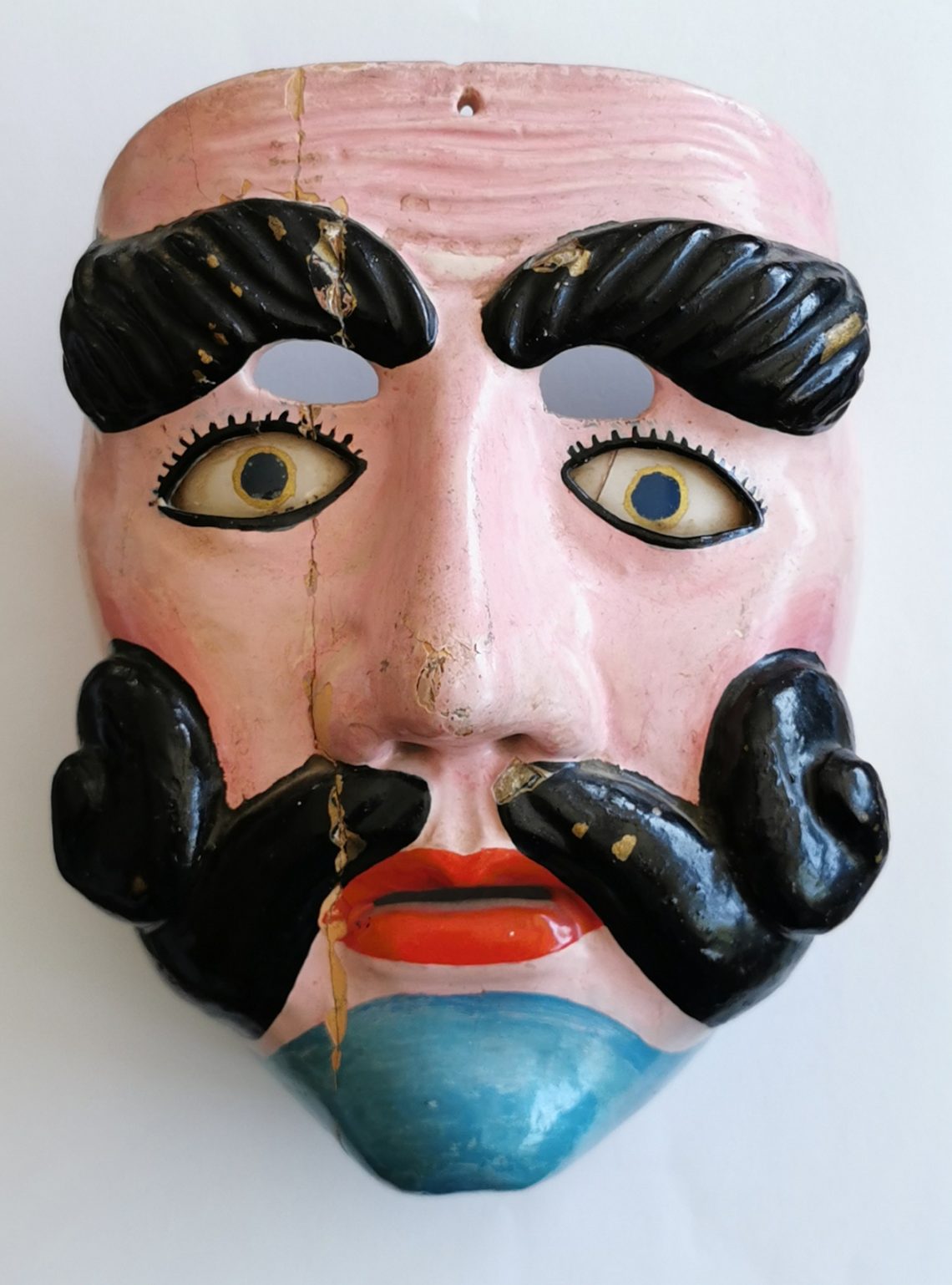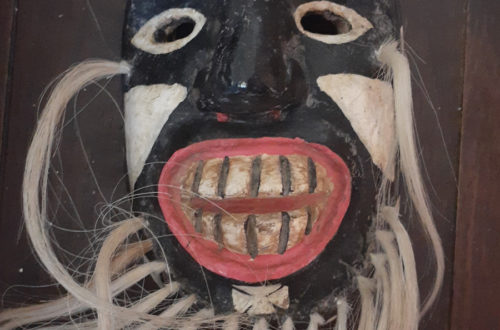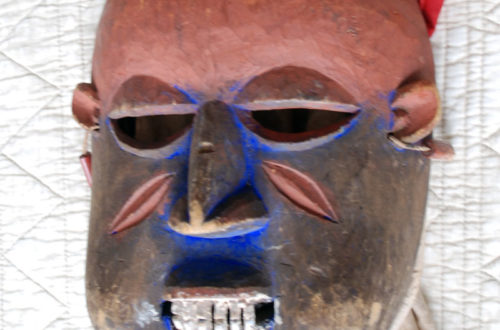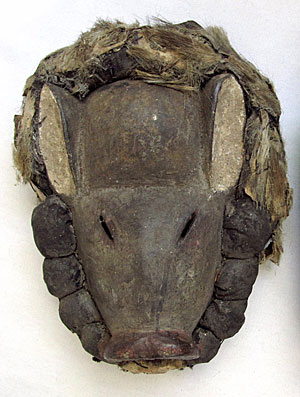 Q: Further to the discussion about restoration some months ago, here is an example of a restoration I have had recently made on a mask. Just the scar of the break on the front side has been treated, all the other chips related to age and use have been left untouched. The break itself, glued many years ago, is still clearly visible on the backside. I wonder if they switched the eyes when they repaired the break because, strangely, the left eye shows a fissure not in relation with any fissure in the wood, although corresponding exactly to the break if transposed to the right side….but on the other hand the paint coating seems to be older than the break (there is no sign of repair of the paint after the break, till my recent restoration…. What would be your expert opinion? Jean, 1717
Q: Further to the discussion about restoration some months ago, here is an example of a restoration I have had recently made on a mask. Just the scar of the break on the front side has been treated, all the other chips related to age and use have been left untouched. The break itself, glued many years ago, is still clearly visible on the backside. I wonder if they switched the eyes when they repaired the break because, strangely, the left eye shows a fissure not in relation with any fissure in the wood, although corresponding exactly to the break if transposed to the right side….but on the other hand the paint coating seems to be older than the break (there is no sign of repair of the paint after the break, till my recent restoration…. What would be your expert opinion? Jean, 1717
A: This is a “Mexican” who is an important character in a frequently performed Guatemalan dance. Probably from the last half of this century, it has been rented many times from a morreria (Spanish for “costume shop”). Those handmade glass eyes may be original, and it was repainted once or twice. The back is lettered with “JFNC” and “HAG,” the latter is probably the morreria owner’s initials.
.
Unfortunately it was broken in half and glued together, somewhat lowering it’s value. Jean has done an absolutely perfect job of restoring it. Even if you blow the front photo way up, you can’t tell it was glued together. I think something like this should be written small on the rear: “Restored” along with the date. That will forever prevent it from being sold unfairly. A+







5 Comments
Jean
Hi Bob,
It is an “Español” from the dance La Conquista de Guatemala, from Palin (province of Escuintla), a small city very close to Guatemala Ciudad. As you say, probably from the second half of Las century (60-70?).
It has been restored by a lady in Brussels, expert restorer working for galleries and museums. Nice work indeed!
Jean
…last century… of course ! I hate the automatic correctors on the phones !!
jean Van de Stadt
Just another comment.
The restoration has not been made to sale the mask, but because the paint was starting to fall apart on the edges of the break. So, there was necessary to fix it, and the restorer explained to me that it was better to have the job done correctly instead of just injecting glue below an already damage part.
It must be noted that used Guatemalan masks are frequently damaged, with multiple repairs, metal plates, wires, and repaints above everything. During dances, the performers are sometimes drunk, the masks fall on the ground…and thereafter they are repaired, restored, repainted several times. Nothing to see with the care the traditional masks benefit from in Japan, for exemple.
So, this is part of their live, and do not affect really their sale price (which anyway was not the point here). The best way to check the real state of a mask, is to look carefully at the back side, where everything is visible.
Jean
Never two without three….
A very similar mask withe the same mark on the back is illustrated in
Guatemalan Masks – A Third Portfolio, Joel E. Brown, 2014, pg 33.
Bob Ibold
Jean,
You are an expert on Guatemalan masquerade. Thanks for the helpful comments.